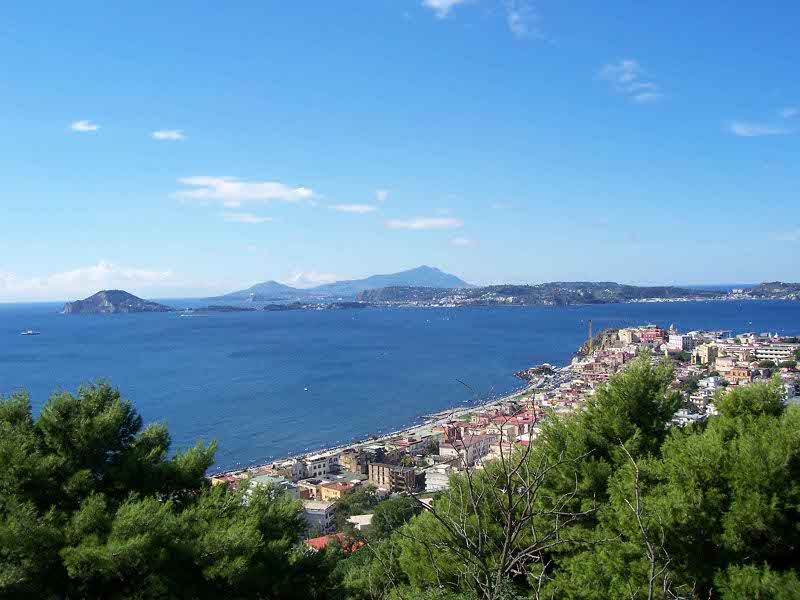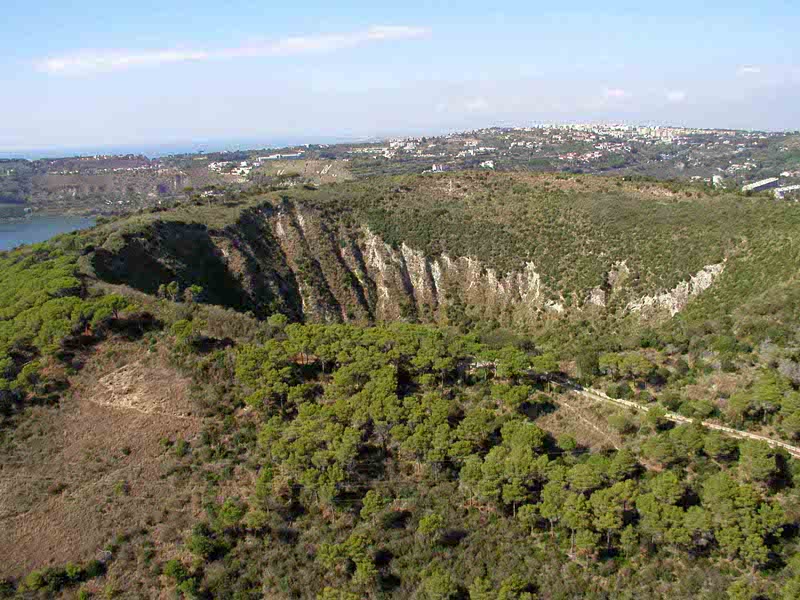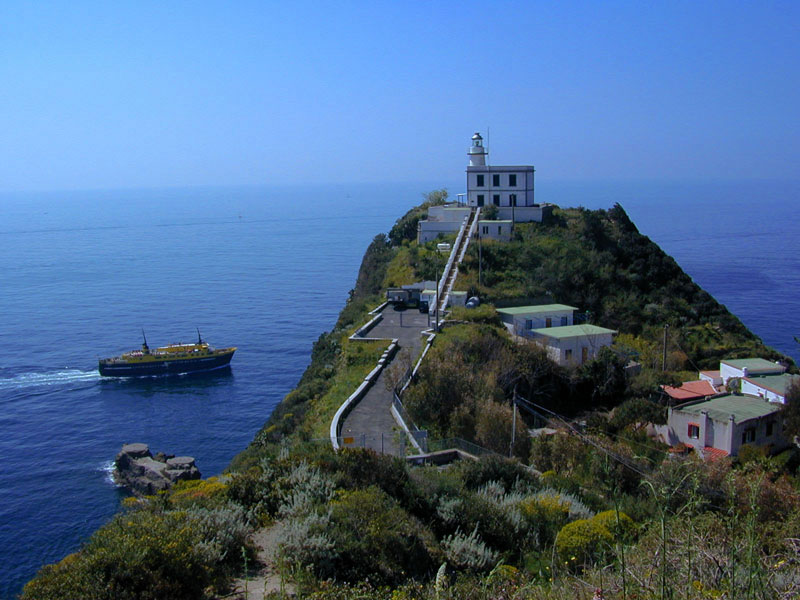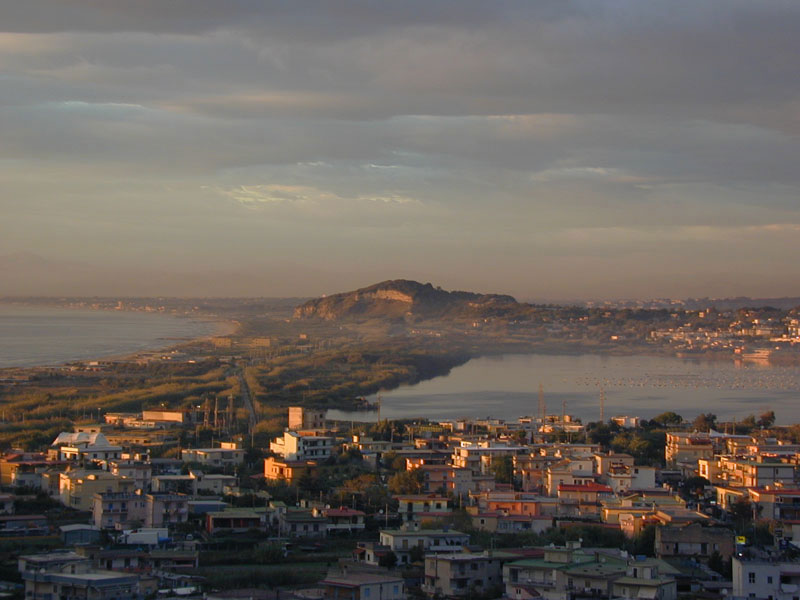Points of Interest
Pozzuoli
Beyond the borders of Naples, there is the town of Pozzuoli, rich in history, culture, and nature.
Nature gave Pozzuoli extraordinary landscapes. You can admire here very
particular natural phenomena like solfatara and bradyseism. Even time
has been generous preserving until now a submerged town, a subterranean
town whose passages intertwine in a labyrinth of streets and alleys
giving the opportunity to go over the everyday life of the past.
And here, among ancient ruins, among the alleys of rione Terra, in a
town where each stone has its story and a past to tell, the challenge
of technological innovation presents itself as a thin thread between
past and future.
(the following links lead to Italian texts)
Naples
Naples, a city of art, opens as an amphitheater on the sea and is
delimited by Vesuvius, by the coastal mountains, and by the islands of
Capri, Ischia, and Procida and by Capo Miseno.
Situated in the
middle of the Mediterranean, administrative center of Regione Campania
and "Capital" of the South of Italy, Naples covers today an area of
117.27 sq.km with a population of about 1,020,120 inhabitants.
Its history is well known by now; the first colonization of the
territory dates back to the 9th century BC, almost 3,000 years ago when
"Anatolian and Achaean merchants and travellers reached the gulf to
head for the mining markets of the upper Tyrrheanian Sea" and founded
Partenope in the area including the holm of Megaride (the present
Castel dell'Ovo) and the Promontory of Mt. Echia (the present Monte di
Dio and Pizzofalcone).
(the following links lead to Italian texts)
The Solfatara
At the Solfatara, near Pozzuoli, it is possible to see a crater of boiling
lava from close up, with its vapors and steaming muds. This active
volcano can be visited and represents one of the main attractions of
Campi Flegrei. It is surrounded by a disturbing atmosphere: the earth
tormented by fire creates a surreal scenery with unimaginable colors.
Born almost 4,000 years ago in the middle of Campi Flegrei, the Solfatara (from late Latin Sulpha Terra,
that is "sulfur land") is characterized by lively fumaroles, sources of
gas and mineral water, spouts of hot mud, and earthquakes.
The
largest fumarole is Bocca Grande, a natural source of steam under
pressure, gushing out at 160°C and consisting of various gases giving
the air the characteristic smell of "rotten eggs".
Lucrino and Averno Lakes
D'Averno Lake is surrounded by hills covered with woodlands.
The sober
landscape and still waters led ancient people to consider it the gates
of the underworld (Aeneid, Odyssey). The name Avernus derives from the
Greek "aornon", meaning "with no birds", which, frightened by the gates
of the underworld, escaped.
In the 1st century AD, Emperor Augustus
decided to create here a naval base, the so-called Portus Julius,
linking the two lakes to the sea through some channels. However, the
new port silted up in a short time and, while the fleet moved to
Miseno, the shores of the lakes filled up with villas and spas.
The Macellum
(c.d. Temple of Serapis)
The imposing building (58x75m) known as "temple of Serapis" (for the
finding of a statue of an Egyptian god which is preserved today in the
National Archaeological Museum of Naples) is one of the most important
examples of "macellum" we have. The "macellum" was the foodstuffs
market built between the end of the 1st and the beginning of the 2nd
century AD and restored at the time of the Severi dynasty (3rd century
AD). It is known since 1750, when the excavations undertaken thanks to
King Charles Bourbon began. They lasted, with ups and downs, until
about 1820.
The building has a square plan and a central yard
surrounded by porticos paved with marble and bordered with 30 columns
made with the granite of Troade, around which the shops were placed
according to the canonical scheme of the Roman markets. There was
probably also an upper floor, as demonstrated by the presence of a
staircase in the southern corner and by the finding not only of granite
columns, but also of smaller columns made with the cipolin coming from
the Greek island of Eubea.
Baia Castle
Archaeological Museum
The Archaeological Museum of Campi Flegrei is situated since 1993 in
the Aragonese Castle of Baia, built by Francesco di Giorgio Martini on
behalf of King Alfonso (1490-1493), which was then largely restructured
in the viceroyal age.
Going beyond the entrance, you will find the
"Gessi di Baia" displayed in an environment opening at the base of the
walls of the complex. The "Gessi" are an extraordinary group of plaster
casts fragments dating back to Roman times, directly coming from the
most famous Greek sculptures of the classic age, mainly in bronze,
which have been irremediably lost.
The casts were used as models by
a workshop of local sculptors specialized in creating marble copies of
the Greek original sculptures the Roman nobles used to place as status
symbols in their villas at Campi Flegrei.
'Piscina Mirabilis'
The so-called "Piscina Mirabilis" is another wonderful monument we can
find in Misene. Misene was the name of one of Ulysses' partners and the
location was named after him; according to another version by Virgil,
Miseno was Aeneas' bugler, who dared to challenge Triton and was
therefore thrown in this stretch of sea.
The decision to place here
the Roman port after Portus Julius had silted up was taken for the
features of the site, which had a double basin with an outer harbor
mush deeper than that of Averno port and with no silting up problems.
After cutting the isthmus between the two basins, the dock and quays
were placed around the Dead Sea, while on the promontory the colony of
Misenum was built. The latter soon became the seat of the famous classis praetoria misenatis, the most imposing Roman military fleet.









